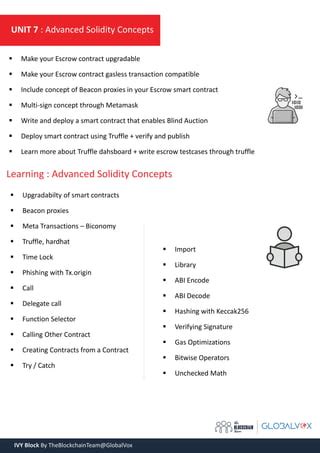Ethereum Abi Decoding and Encoding: A Guide to Structures and Code
As a developer working with Ethereum smart contracts, understanding the Solidity programming language is crucial to creating efficient and secure code. In this article, we’ll dive into the basics of abi (Application Binary Interface) decoding and encoding in Solidity, focusing on structures and their representation.
What is abi?
abi is an interface that defines a set of rules and constraints for interacting with smart contracts. It’s essentially a contract for your own contract to follow certain guidelines. Several platforms, including Ethereum’s Remix IDE, Truffle Suite, and other tools, use ABI to translate Solidity code into bytecode.
Abi Structure

In Solidity, a structure (also known as an object) has the following structure:
“solidity
struct StructName {
// Field1: Type1, Description
Type1: Type2, Description: “Description of field 1”
…
}
Here is what each box represents:
TypeX: The data type of the field.
Description: A short description of the field.
Decoding abi
When decoding an abi or contract file from Solidity code, you must map the ABI rules and constraints to your own structures. Here are some typical examples:
Field Mapping: In a structure definition you can specify which fields correspond to which parameters in the ABI.
"solidity
struct MyContract {
// Defining fields as variables
uint256 balance;
}
- Type Mapping: You can also map Solidity types (e.g. integers) to your own data types. This is useful when working with custom contracts or libraries.
“solidity
type Int = uint256;
struct MyContract {
// Define fields as variables
Price intX18;
}
Parameter Mapping: The ABI defines the input parameters for a contract function. You can map these parameters to your own constructor arguments.
Abi Coding
When coding Solidity code in an abi file, you must ensure that your code complies with the ABI rules and restrictions specified in the contract definition.
Structure Frame Definitions: Create structures that match the ABI structure.
"solidity
struct MyContract {
uint256 balance;
}
- Field mappings: Define fields as variables with their corresponding types and descriptions.
“solidity
struct MyContract {
uint256 balance: 1,
int128 priceX18: 3,
uint64 quantity: 4,
uint64 expiration: 5,
uint64 nonce: 6
}
Type mappings: Map Solidity types to your own data types.
"solidity
Int type = uint256;
struct MyContract {
IntX18 price: Int;
}
Use case example
Suppose we have a contract that defines an order structure with the following abi:
“solidity
struct Order {
bytes32 sender;
int128 priceX18;
int128 quantity;
uint64 expiration;
uint64 nonce;
}
solidity pragma ^0.8.0;
contract MyContract {
mapping(address => Order) public orders;
function placeOrder() public payable {
// Get order data from ABI
bytes32 sender = msg.sender;
int128 priceX18 = 10;
int128 quantity = 5;
uint64 expiration = block.timestamp + 60 days;
uint64 nonce = uint64(0);
// Encode the order structure using abi
Order memory order = Order(
sender,
priceX18,
quantity,
expiry,
meanwhile
);
// Store order in mapping
orders[msg.sender] = order;
// Emit events (optional)
emit PlaceOrder(msg.sender, order);
}
}
“
In this example, we define anOrderstructure and aplaceOrder()` contract function that takes input parameters from the ABI.

